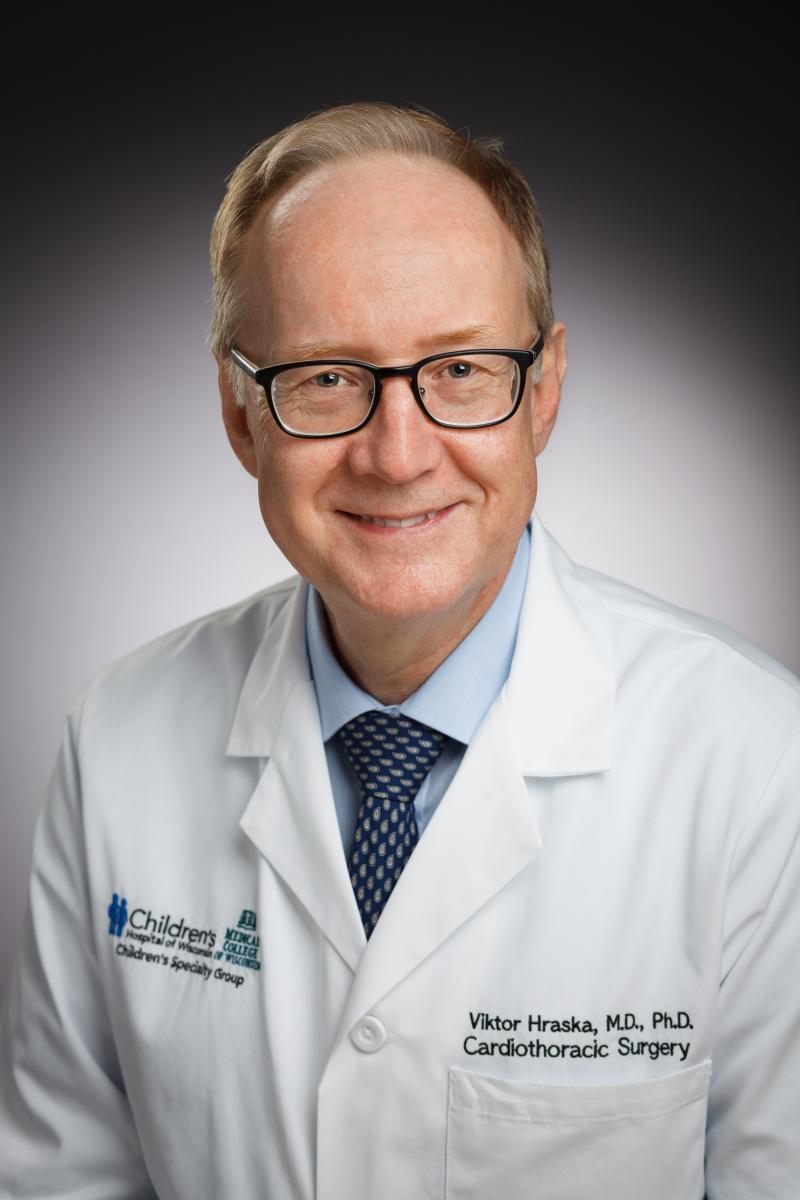ALERT!
This site is not optimized for Internet Explorer 8 (or older).
Please upgrade to a newer version of Internet Explorer or use an alternate browser such as Chrome or Firefox.
Featured Profile and Interview With Viktor Hraska, M.D.
Dr. Viktor Hraska is a professor of surgery and the chief of the Division of Congenital Heart Surgery at the Medical College of Wisconsin and the surgical director of the Herma Heart Institute at the Children’s Hospital of Wisconsin, both in Milwaukee, USA. Dr. Hraska earned his MD from the Comenius University in Bratislava, Czechoslovakia. He trained at the Institute of Cardiovascular Diseases and then in cardiac surgery at the Children’s Hospital, both in Bratislava, before completing his cardiac surgery training at Boston Children’s Hospital in Massachusetts, USA. During the last 20 years, he has served as the surgeon-in-chief of several pediatric cardiac surgical programs, first at Children’s Hospital Bratislava in Slovakia, then at the University Hospital Eppendorf in Hamburg, Germany, and at the German Pediatric Heart Center Sankt Augustin in Germany. Following this, he moved to his current role at the Medical College of Wisconsin.
Dr. Hraska’s clinical interest is in complex neonatal and infant surgery, including valve reconstructions, anatomic correction of complex conotruncal malformations such as corrected transposition of the great arteries, and alternative brain perfusion techniques during arch reconstructions. He is a member of the European Association for Cardio-Thoracic Surgery, the European Congenital Heart Surgeons Association, the World Society for Pediatric and Congenital Heart Surgery, the American Association for Thoracic Surgery, and The Society of Thoracic Surgeons, and he serves on the editorial board of the World Journal for Pediatric and Congenital Heart Surgery. Dr. Hraska regularly lectures worldwide on pediatric cardiac surgery topics and has published extensively, including books, book chapters, and articles.
You trained and have practiced in three different countries. What is the most interesting or valuable aspect of such geographically broad experience?
Such geographically broad experience has accelerated my professional development. The turning point of my carrier was the opportunity to be trained and subsequently work in Boston Children’s Hospital. With time I have realized that comparable clinical outcomes can be achieved in several different ways, regardless of resources or health systems. Interestingly enough limited resources encourage creativity and simplification of treatment pathways, obviously there are many ways to skin the cat. On the other hand I’ve learned that research is critical to improvement, however is highly depended on resources and not every health system allows us to bring new developments to the patient as quickly as possible. US systems in comparison with Europe seems to be more pro-research orientated, having appropriate resources to foster clinical and translation research with positive impact on clinical outcomes.
What was it about congenital heart surgery that drew you to the specialty when you were in your training?
I was fascinated by morphological, physiologic complexity of congenital heart diseases and challenging surgical treatment. One needs not only technical skill but 3D understanding of the lesion and creativity to execute surgery correctly. From many aspects congenital heart surgery is challenging however very gratifying. In the majority of cases surgical treatment gives hope and potentially new life to babies born with congenital heart disease. There are not many jobs like this with immediate return, and I feel very privileged to contribute.
In your opinion, what has been the most notable advance in congenital heart surgery during your career?
Our understanding of morphology and physiology of all aspects of congenital heart diseases, particular single ventricle physiology, had improved dramatically over the last decade, followed by better hemodynamic data capturing, interpretation and imaging. At the same time refinements of cardiopulmonary bypass strategy and myocardial and brain protection have been introduced. Another very important advance has been development of robust databases on both sides of the Atlantic, which represent an invaluable source of feedback information, allowing exchange of knowledge and experiences with positive impact on public reporting.
What do you see as the biggest challenge in congenital heart surgery right now?
The biggest challenge in our field is the growing population of failing single ventricle patients with increase demand for mechanical support of circulation and heart transplant. I am afraid that in this time frame there is no sustainable strategy on how to cope with this load. Regionalization of expertise and resources might help. In general the politicians are incapable to deal with these challenges, we have to rely on ourselves. Therefore congenital cardiac surgery and related services must be now, more than ever, a business, which requires rigorous financial accountability and forward strategic planning, while remaining to be clinically led, but professionally managed.




